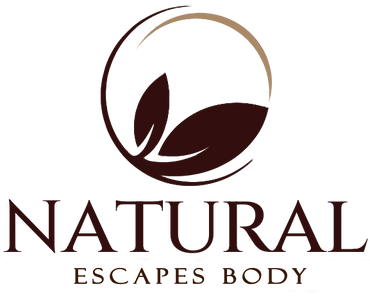Fruit Acid Complex (AHAs): Gentle Multi-Acid Exfoliation & Brightening
Quick Facts
Chemical Name: Multi-Acid Botanical Exfoliation Complex
INCI Name: Fruit Acid Complex (various)
Extract Type: Blend of alpha hydroxy acids (AHAs) and botanical fruit extracts
Benefits: Gentle exfoliation, cellular renewal, skin brightening, pore refinement, anti-aging support
Best Uses: Exfoliating treatments, anti-aging masks, brightening skincare
Fruit Acid Complex is a naturally derived blend of alpha hydroxy acids (AHAs) and fruit extracts that delivers gentle yet effective exfoliation. By combining lactic, glycolic, citric, malic, and tartaric acids with nourishing fruit botanicals, this complex removes dead skin cells, refines texture, brightens tone, and supports barrier health. Unlike harsh scrubs or single-acid formulas, the multi-acid synergy provides comprehensive exfoliation while minimizing irritation, making it a clean beauty favorite for smoother, more radiant skin.
What the Science Says
- Accelerates epidermal turnover, improving skin texture and thickness within 2–4 weeks[1][2]
- Stimulates collagen and elastin synthesis, reducing fine lines and improving firmness[3][4]
- Maintains healthy pH balance, protecting barrier function and microbiome[5]
- Reduces hyperpigmentation and improves melasma, age spots, and uneven skin tone[2][5]
Key Nutrients / Compounds
- Lactic Acid: Hydrating, surface-level exfoliation ideal for sensitive skin
- Glycolic Acid: Deep-penetrating exfoliant for cellular renewal and anti-aging
- Citric Acid: Citrus-derived acid that balances pH and provides antioxidants
- Malic Acid: Apple-derived exfoliant with added hydration and radiance benefits
- Tartaric Acid: Wine-derived antioxidant that supports cellular turnover
- Fruit Extracts (Orange, Lemon, Sugar Maple, Bilberry, Sugarcane): Provide natural acids, antioxidants, vitamins, and barrier-supportive compounds
Skin Benefits
- Refines skin texture and smoothness
- Reduces fine lines and early signs of aging
- Fades hyperpigmentation and evens skin tone
- Clears clogged pores and reduces breakouts
- Boosts radiance and brightness
- Supports healthy barrier function and pH balance
Why Natural Escapes Body Uses It
At Natural Escapes Body, we include Fruit Acid Complex at a 3% concentration in our Cranberry & Grapeseed Exfoliating Face Mask. This balanced level provides effective chemical exfoliation while remaining gentle on skin. Paired with cranberry seeds for natural mechanical exfoliation and grapeseed oil for nourishment, this synergy smooths rough texture, unclogs pores, and restores radiance without over-exfoliating.
Products Featuring This Ingredient
Safety Notes
- Comedogenicity: Non-comedogenic
- Patch Testing: Essential due to potential irritation; start with low concentrations
- Who Should Avoid: Individuals with rosacea, eczema, or fruit allergies should use caution
- Photosensitivity: Increases sun sensitivity—daily SPF 30+ required
- Pregnancy: Generally safe at low concentrations; avoid high-strength peels
FAQs
Is Fruit Acid Complex safe for sensitive skin?
Yes, when used at low concentrations. Lactic and malic acids are especially suitable for sensitive skin types.
Do I need sunscreen when using Fruit Acid Complex?
Yes. Fruit acids increase photosensitivity, so a daily broad-spectrum SPF 30+ is essential.
How often should I use the Cranberry & Grapeseed Exfoliating Face Mask?
We recommend 1–2 times per week. This ensures the skin benefits from both the 3% Fruit Acid Complex and natural cranberry seed exfoliation without over-exfoliation.
Scientific References
Main Studies:
- Safety Assessment of Alpha Hydroxy Acids as Used in Cosmetics. Cosmetic Ingredient Review, 1998.
- Glycolic acid peel therapy – a current review. Current Dermatology Reports, 2014.
- Evaluating the Efficacy and Safety of Alpha-Hydroxy Acids in Dermatological Practice: A Comprehensive Clinical and Legal Review. Clinical, Cosmetic and Investigational Dermatology, 2024.
- The use of glycolic acid as a peeling agent. Dermatologic Clinics, 1995.
- Chemical Peels for Skin Resurfacing. StatPearls, 2023.
Additional Sources:
- Clinical evaluation of glycolic acid chemical peeling in patients with acne vulgaris: a randomized, double-blind, placebo-controlled, split-face comparative study. PubMed, 2014
- Comparative Study of 35% Glycolic Acid, 20% Salicylic–10% Mandelic Acid, and Phytic Acid Combination Peels. PMC, 2019
- Most worthwhile superficial chemical peel for melasma of skin of color: Authors' experience. PubMed, 2021
- The therapeutic value of glycolic acid peels in dermatology. PubMed, 2007

